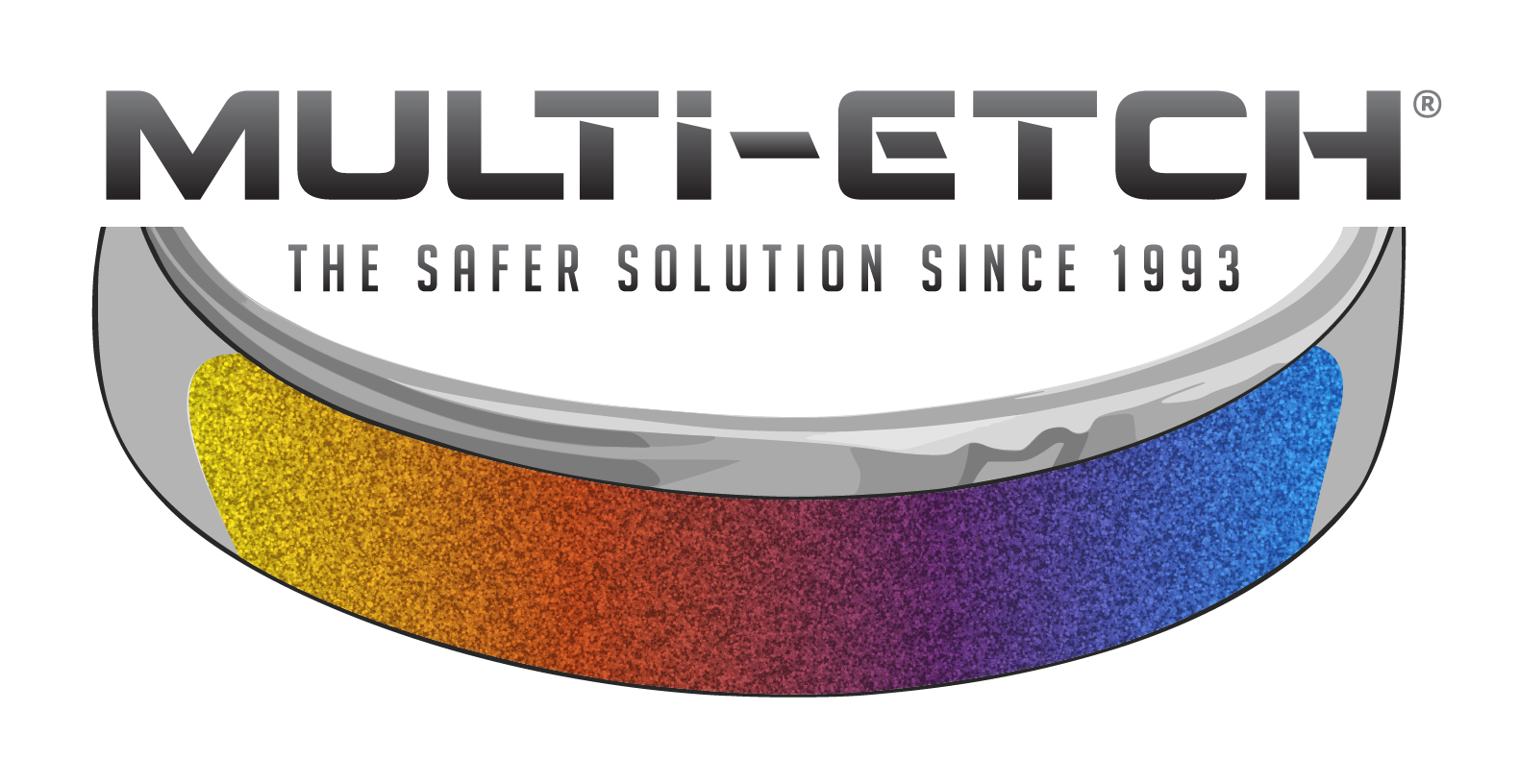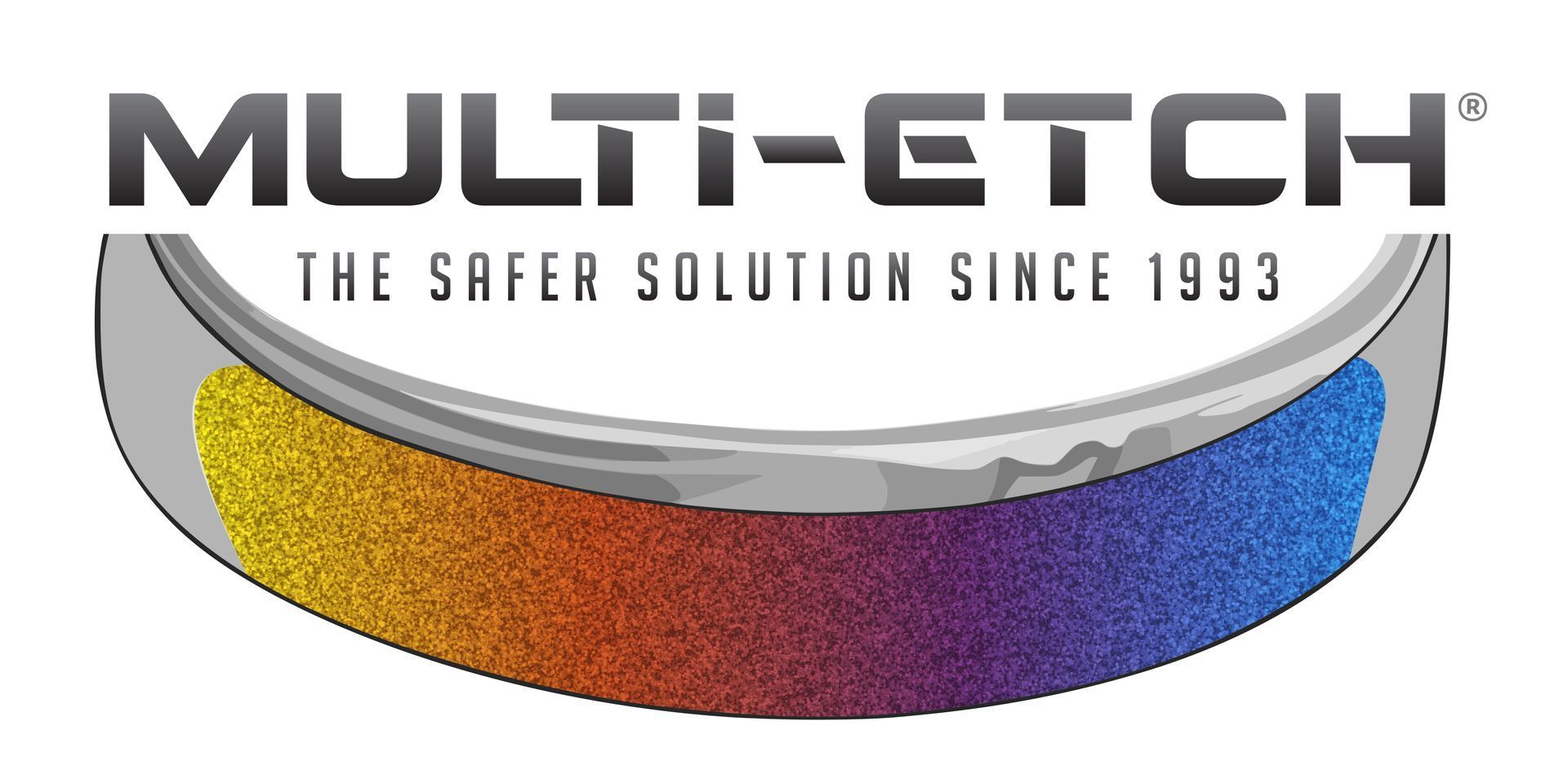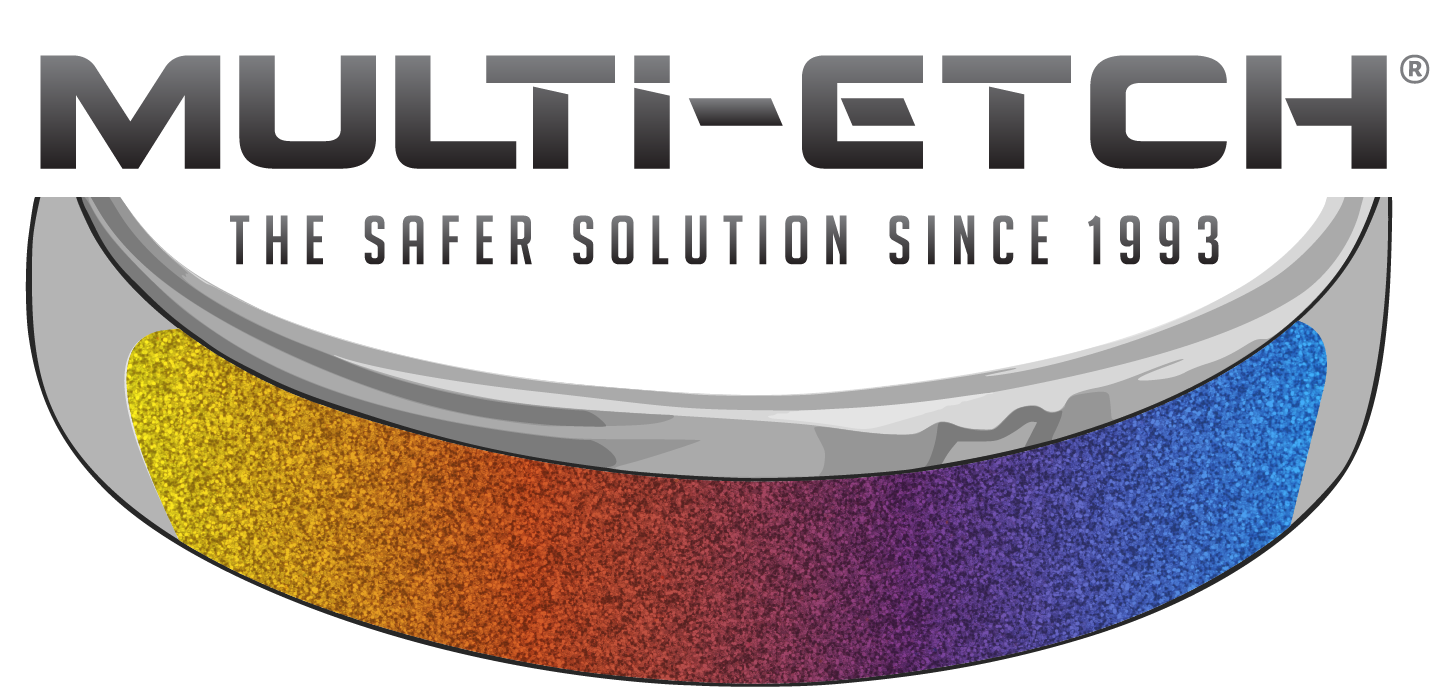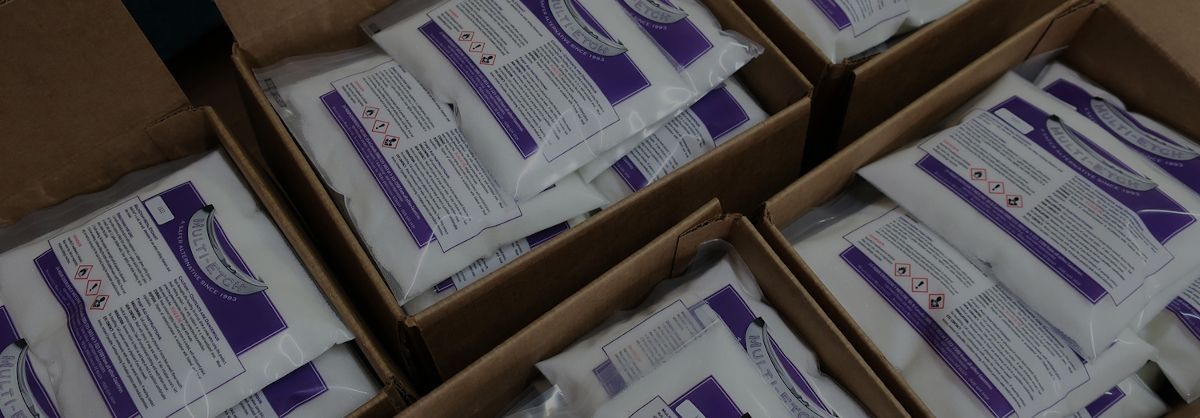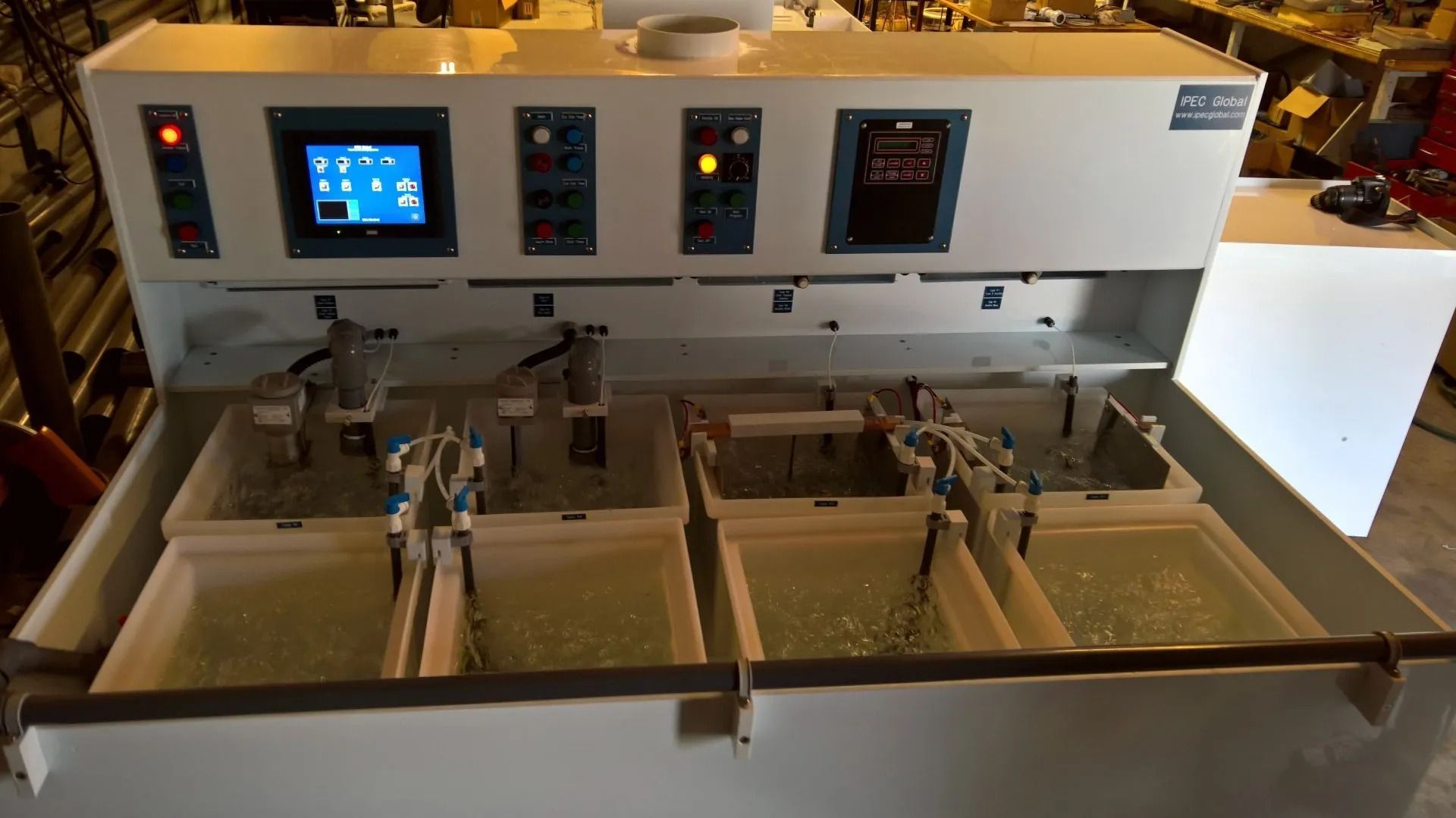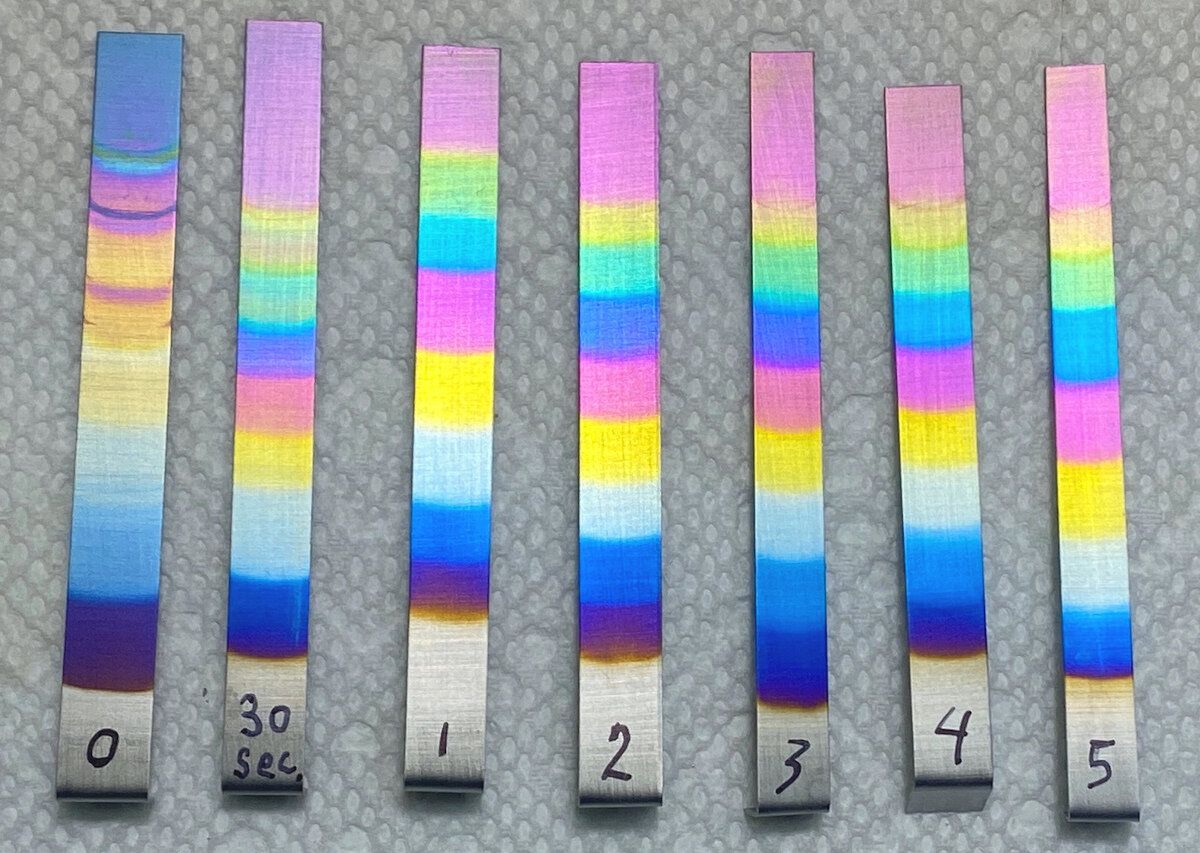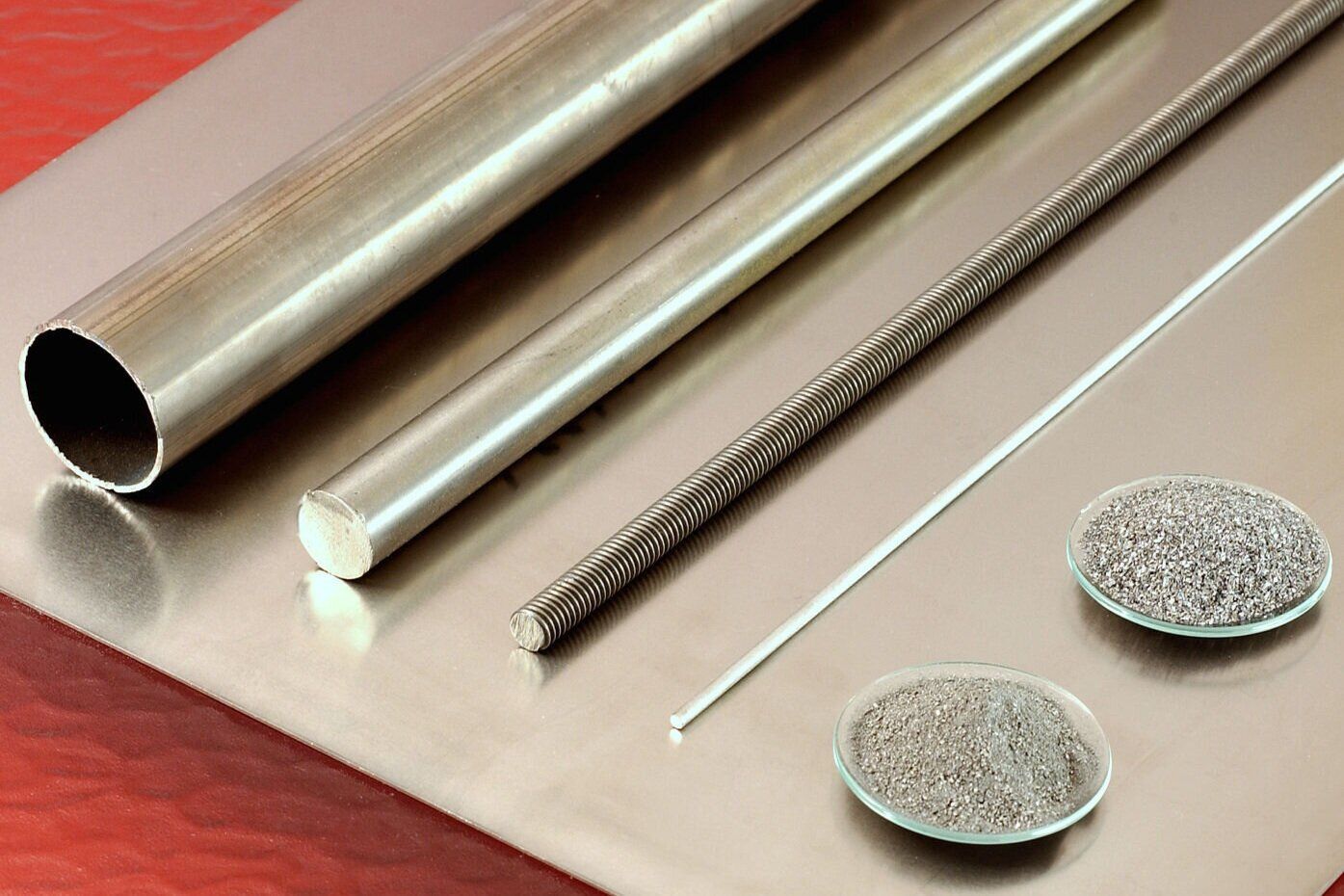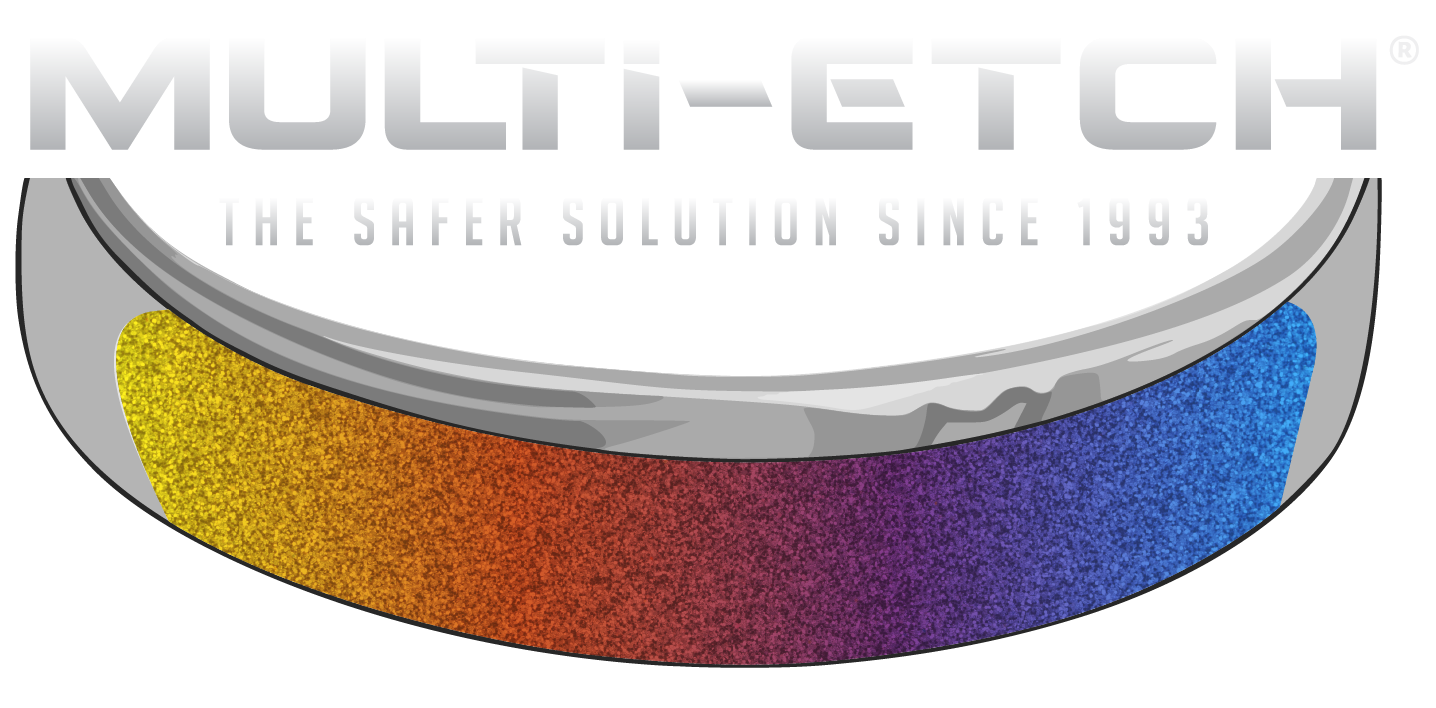MULTI-ETCH BLOG
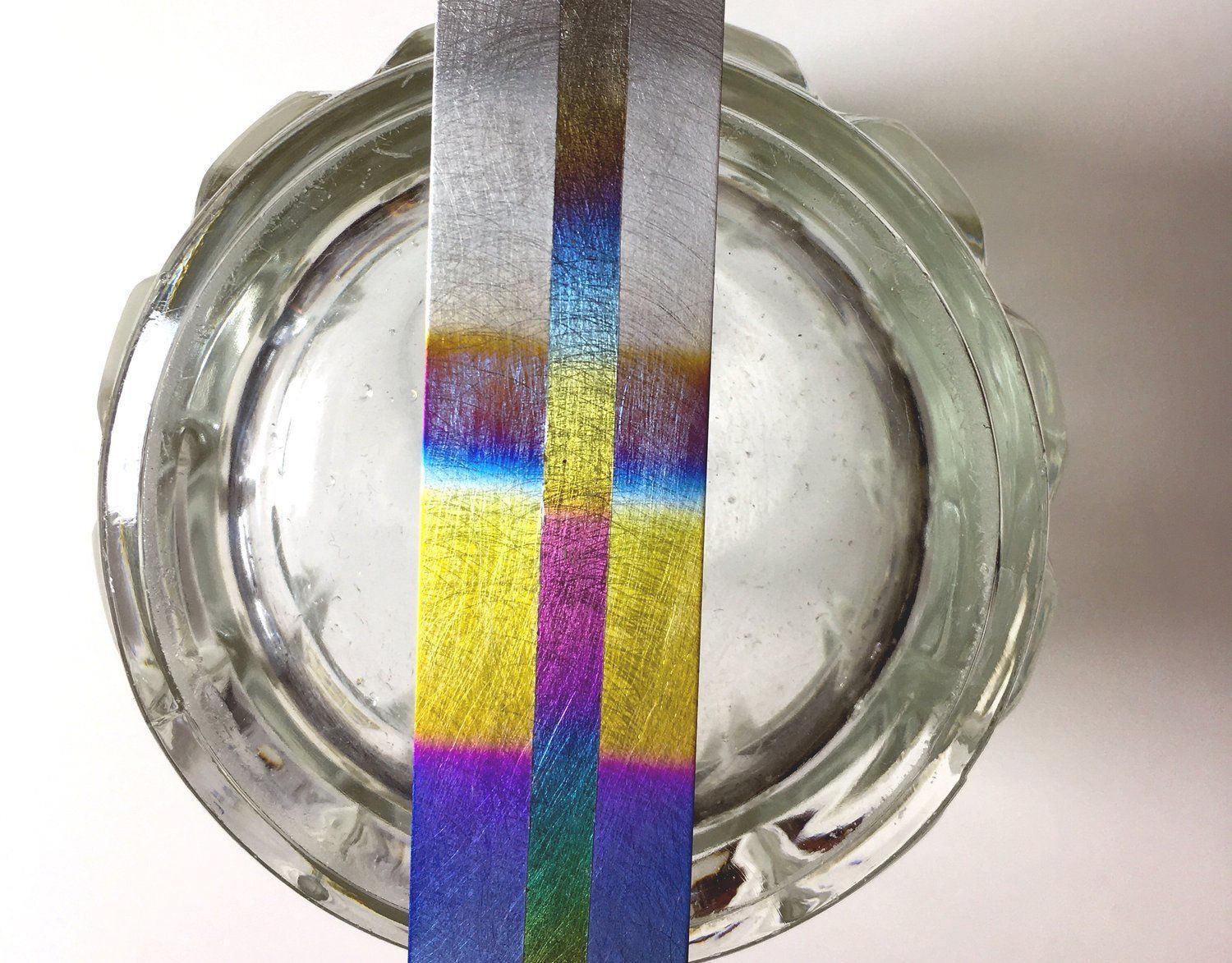
Here is an interesting method for an extractive coloring technique using Multi-Etch. Perhaps you’ve gone beyond that color you wanted when anodizing titanium or niobium, i.e., the voltage you applied was too high and the coloration needs correcting. You wanted a nice yellow but hit the pink fuchsia range above it. Rather than completely erasing the color, it is possible to Multi-Etch the anodized item and work backwards to the color you wanted. It takes some practice and skill working with this technique but it can produce the colors you're after. A quick demonstration:

Like many of you, we have a long history working with titanium, in our case for making jewelry and wall art. In 1990, we were honored with a commission to make a plaque of titanium commemorating the discovery of titanium in Cornwall, UK. We were given some materials by the Titanium Development Association (now the International Titanium Association ) to help design the plaque, including a copy of a painting of the discoverer Rev. William Gregor. We included a glass vial of ilmenite (from which titanium can be refined), titanium sponge, an ingot of titanium, and some mill products.
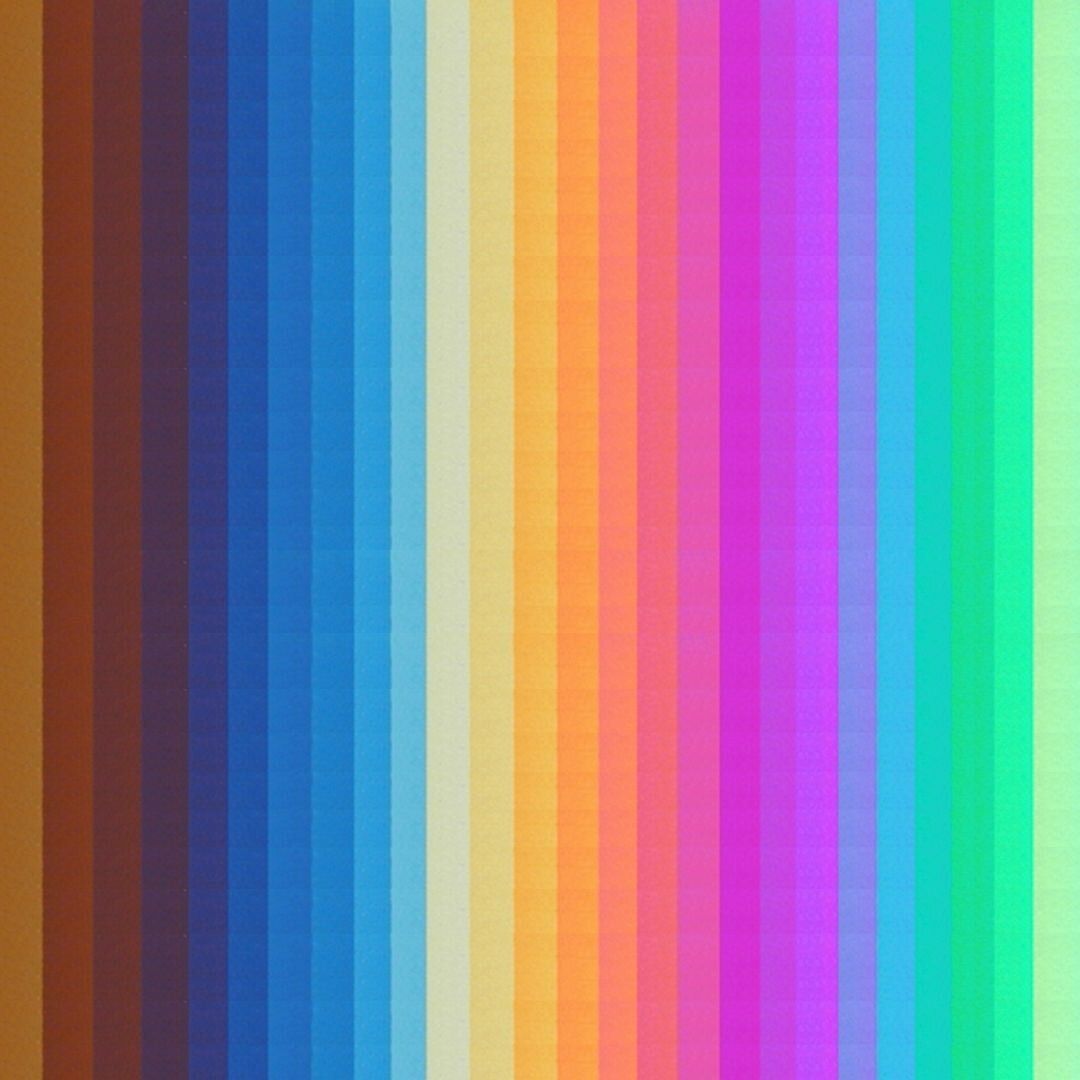
Sometimes it’s handy to prepare a titanium piece with Multi-Etch and then protect the piece in a way that allows you to set it aside and anodize later. One simple way is to Multi-Etch the piece, rinse, and then store in a tank of DI or distilled water. We’ve found this lasts at least 2-3 days, and probably longer. A second way is to Multi-Etch and then “base coat” your titanium part with 8-10 volts. Those parts can then be stored dry and the base coating will protect the piece for a long time. We’ve stored pieces that way for years and been able to anodize them in the same brilliant colors we can produce when we are working with freshly Multi-Etched pieces. The only drawback with base-coating is that there will be a light tan on the piece, so if you need part of the piece to remain the natural color of titanium, base coating won’t work for you. A third way that works on flat pieces is to Multi-Etch the piece and then cover and apply anodizers’ tape on the flat piece, burnishing thoroughly to make sure you cover the whole piece completely. You should cut the tape big enough to fold over the edges. The concept with these three methods is to prevent the formation of the oxide layer that Multi-Etch is designed to remove. Happy anodizing!
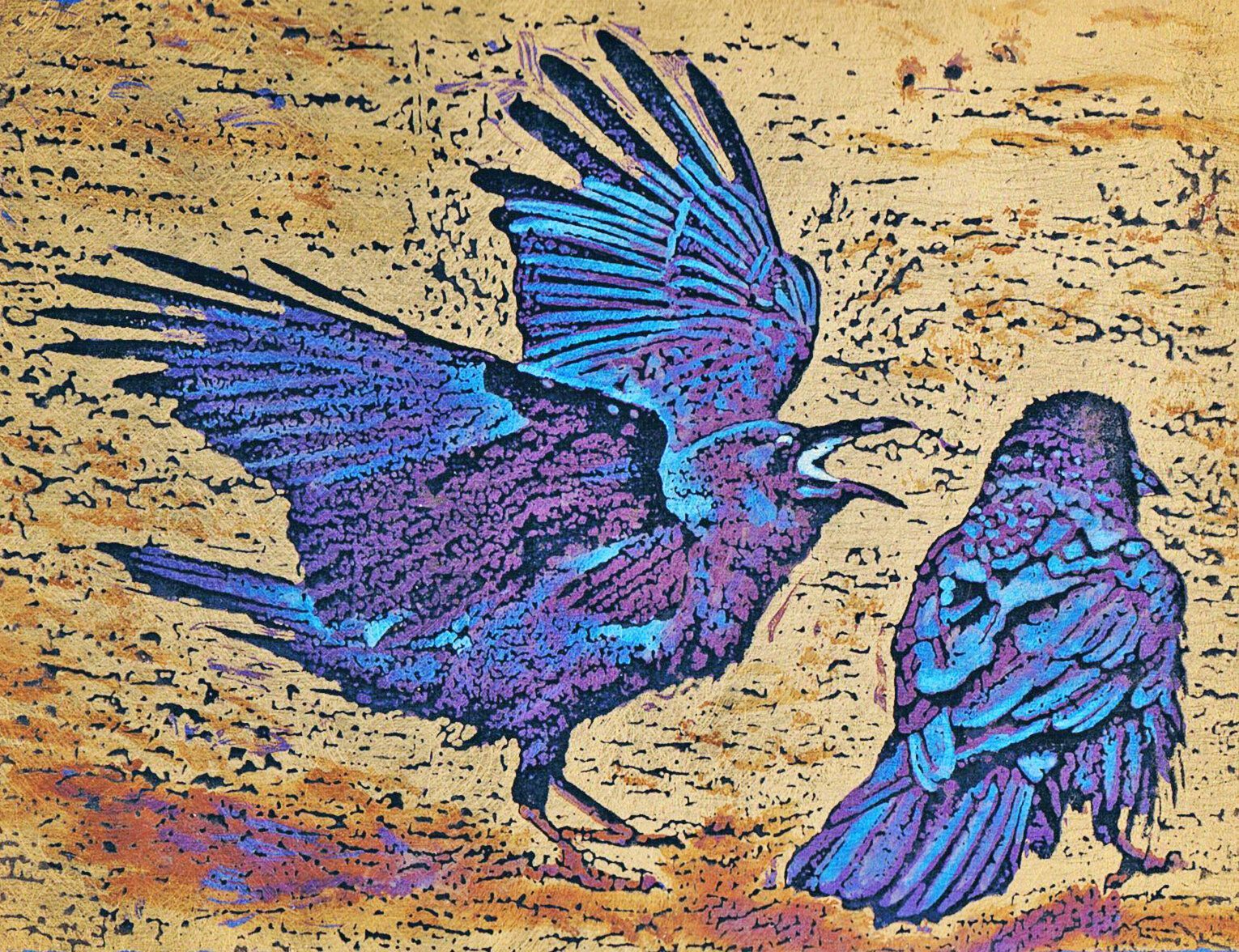
Do you find yourself with extra time on your hands? This could be the perfect opportunity to investigate Multi-Etch. We have a lot of information on our website. If you've been thinking about anodizing titanium or bringing the process in-house, give us a call 928-634-5307 or email info@multietch.com. We are here to help!
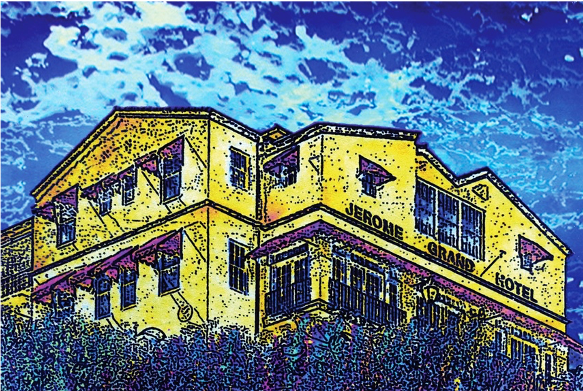
Chris and Sandy Boothe began their exploration into titanium when they first used it to make jewelry in the mid-1970's. After joining the Jerome (AZ) Artists Cooperative Gallery in 1999, they added titanium wall art. They wanted to make images of the buildings in Jerome, many of which were built in the late 1800's. Along the way they added outdoor images of the Sedona landscape. Their first attempts weren't always what they wanted--they needed more definition around the important parts of the images. So, they investigated a masking material called Press-n-Peel Blue Transfer Film . They start by taking photos and then manipulate those photos in Photoshop until they have images that are black and white; gray doesn't work that well with this technique.
